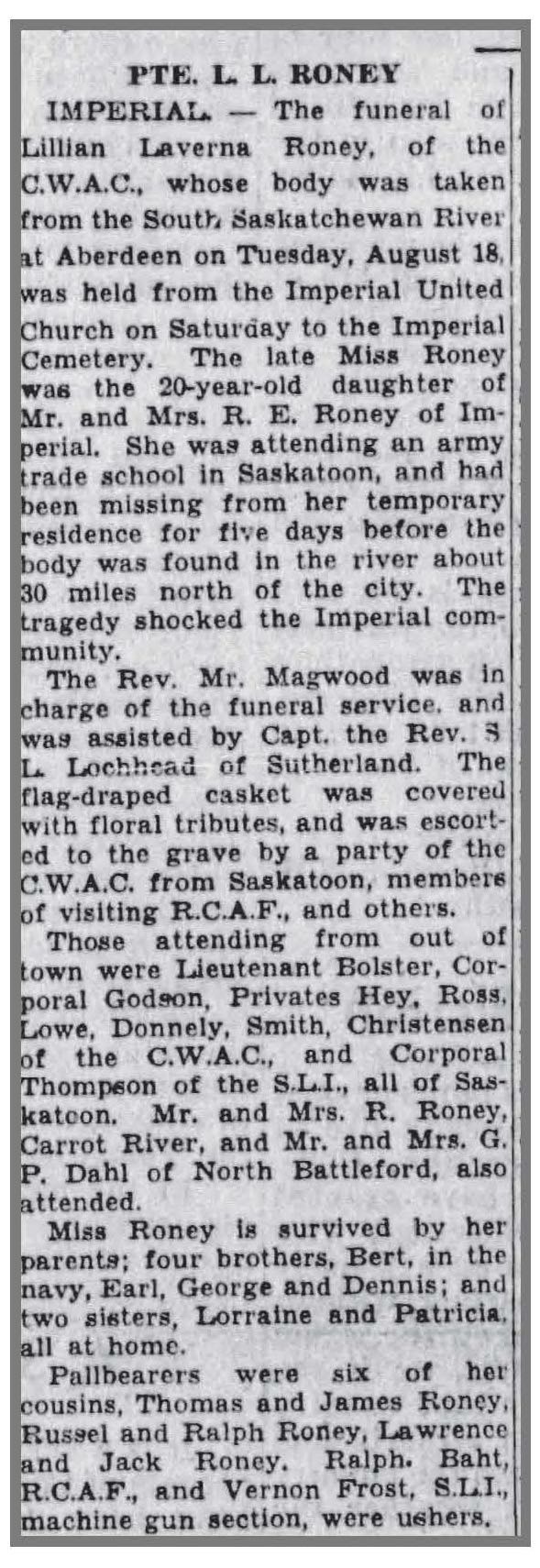
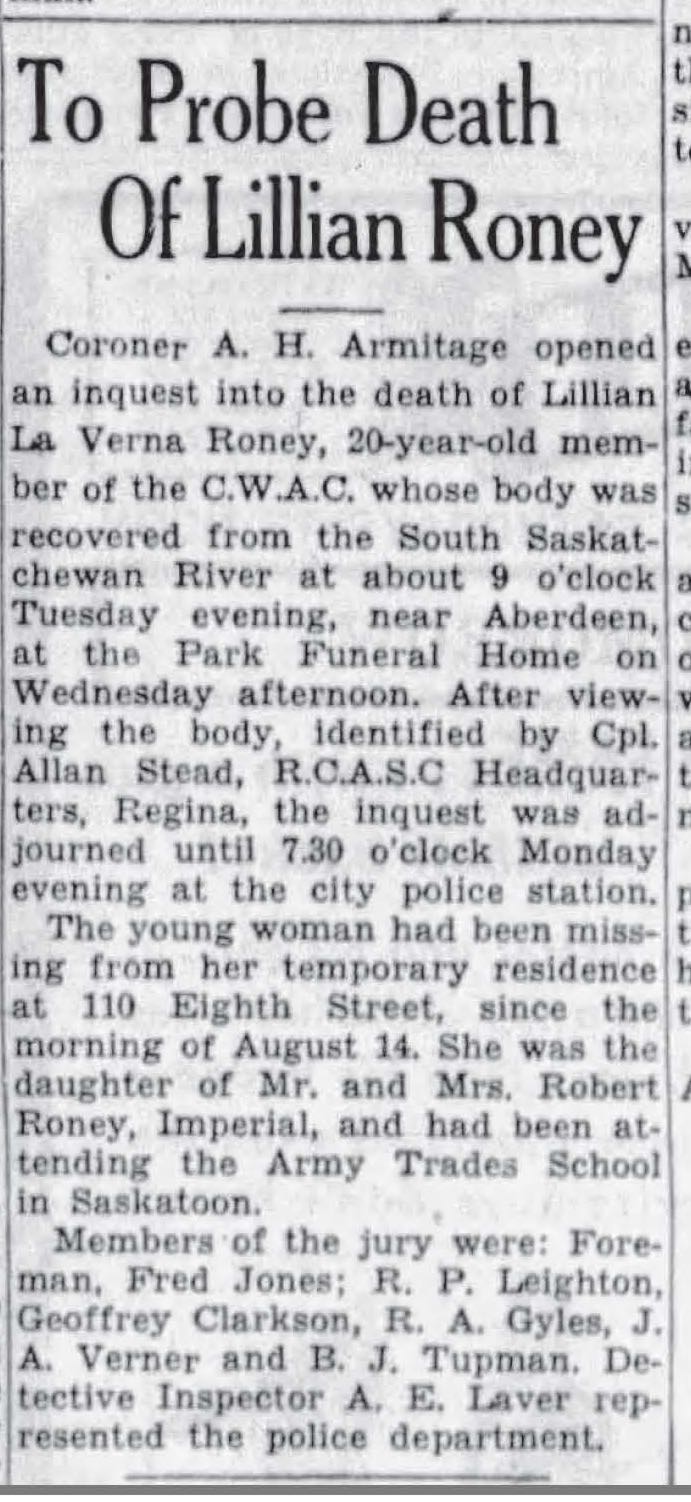
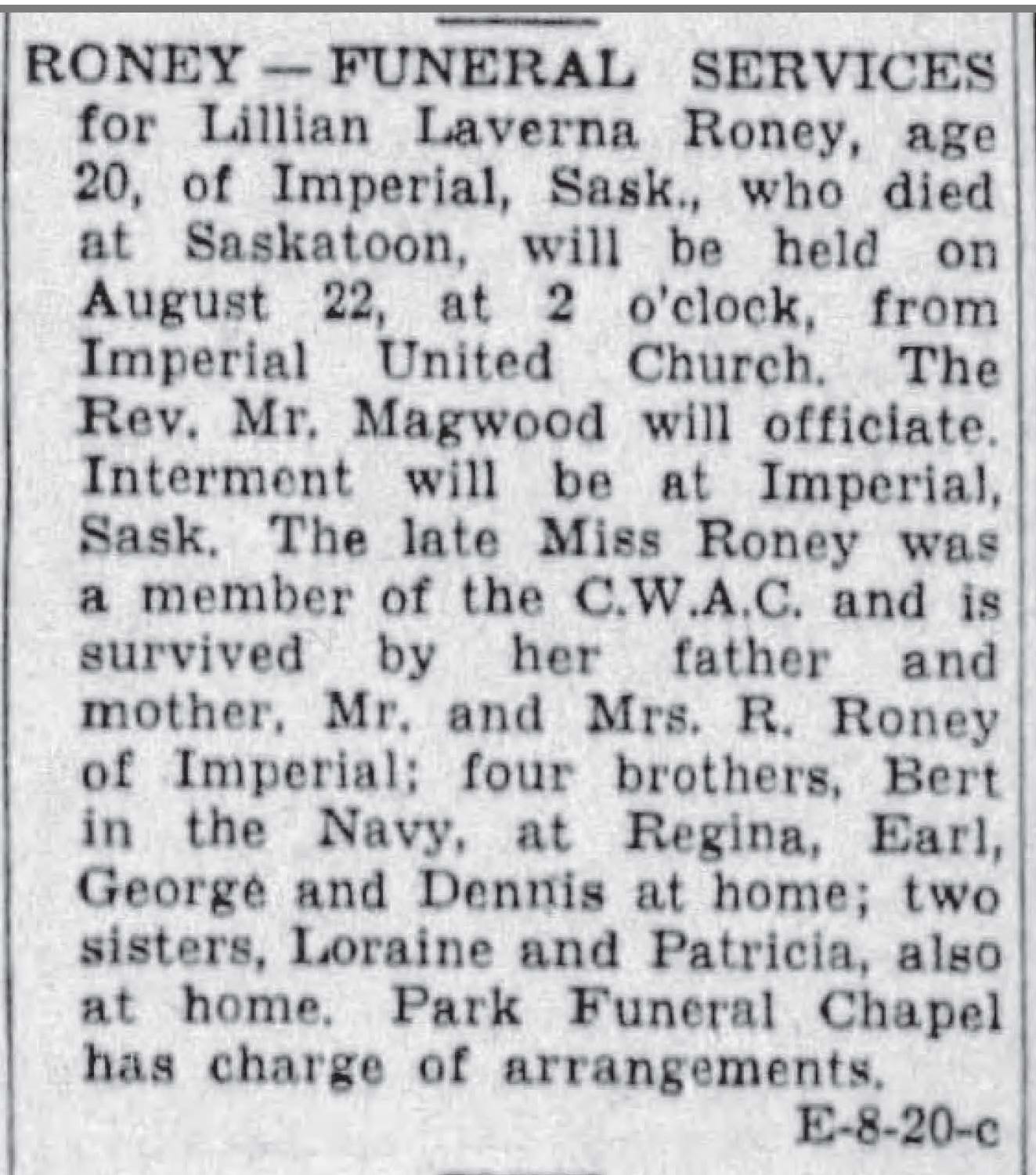
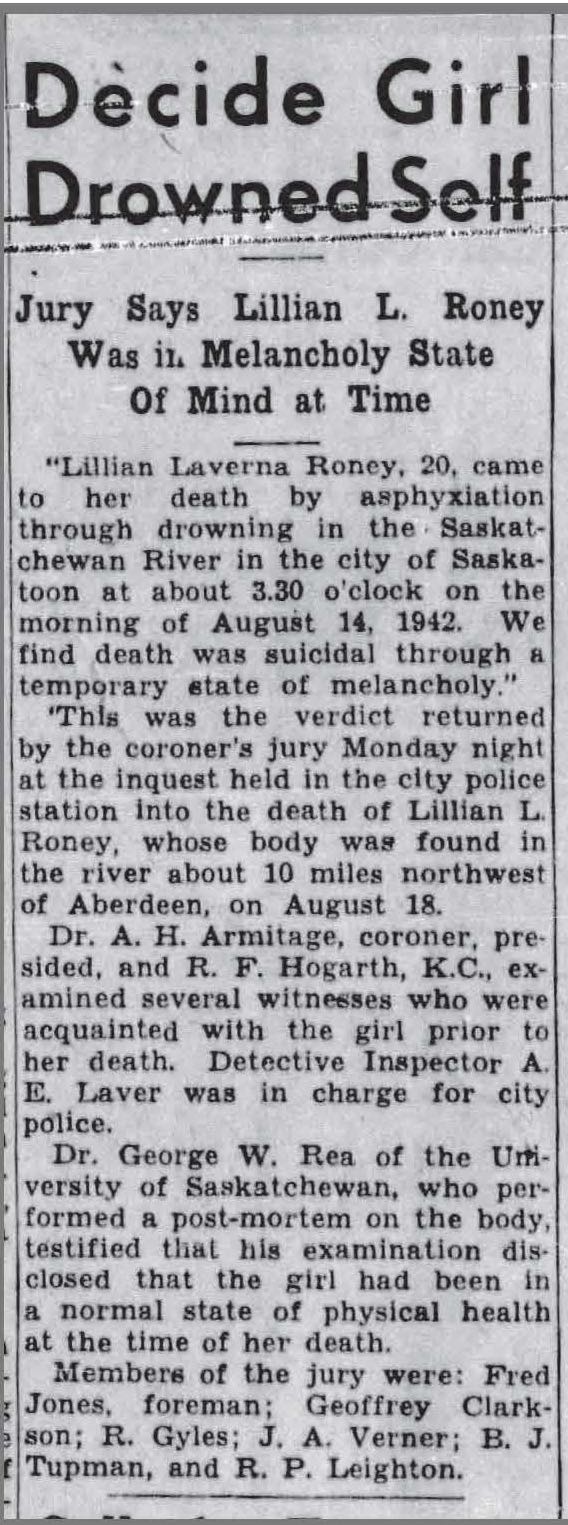
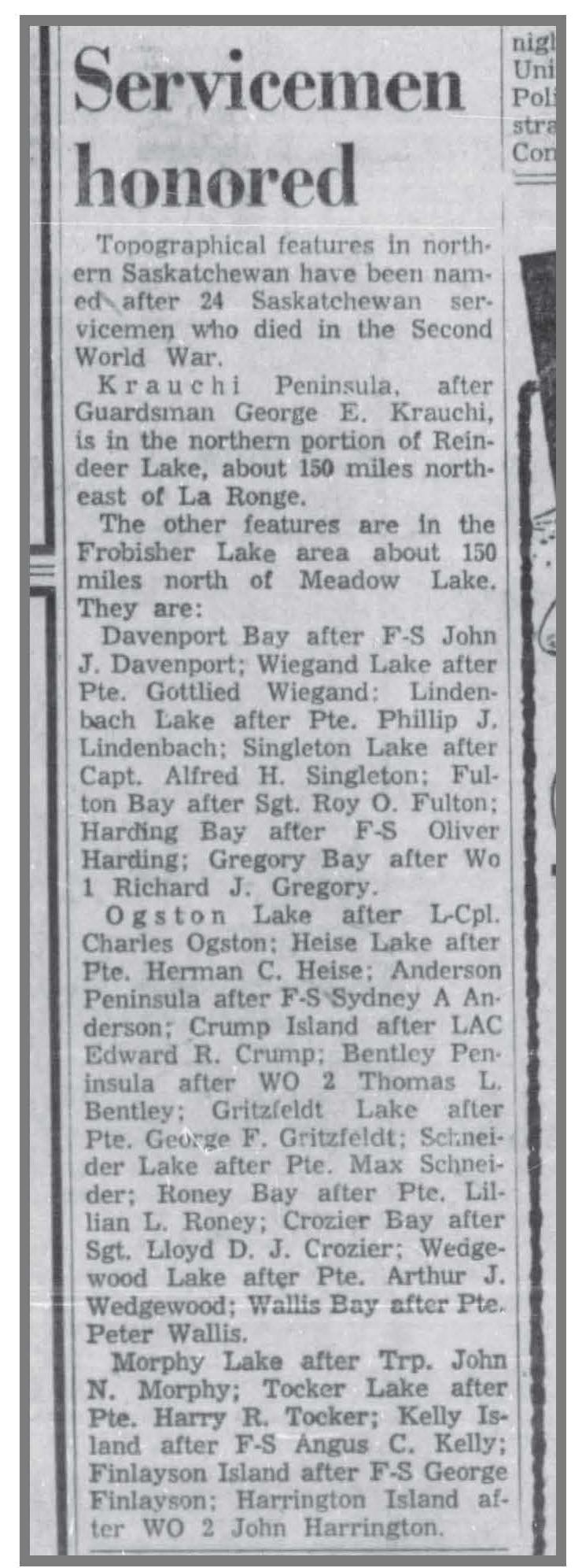
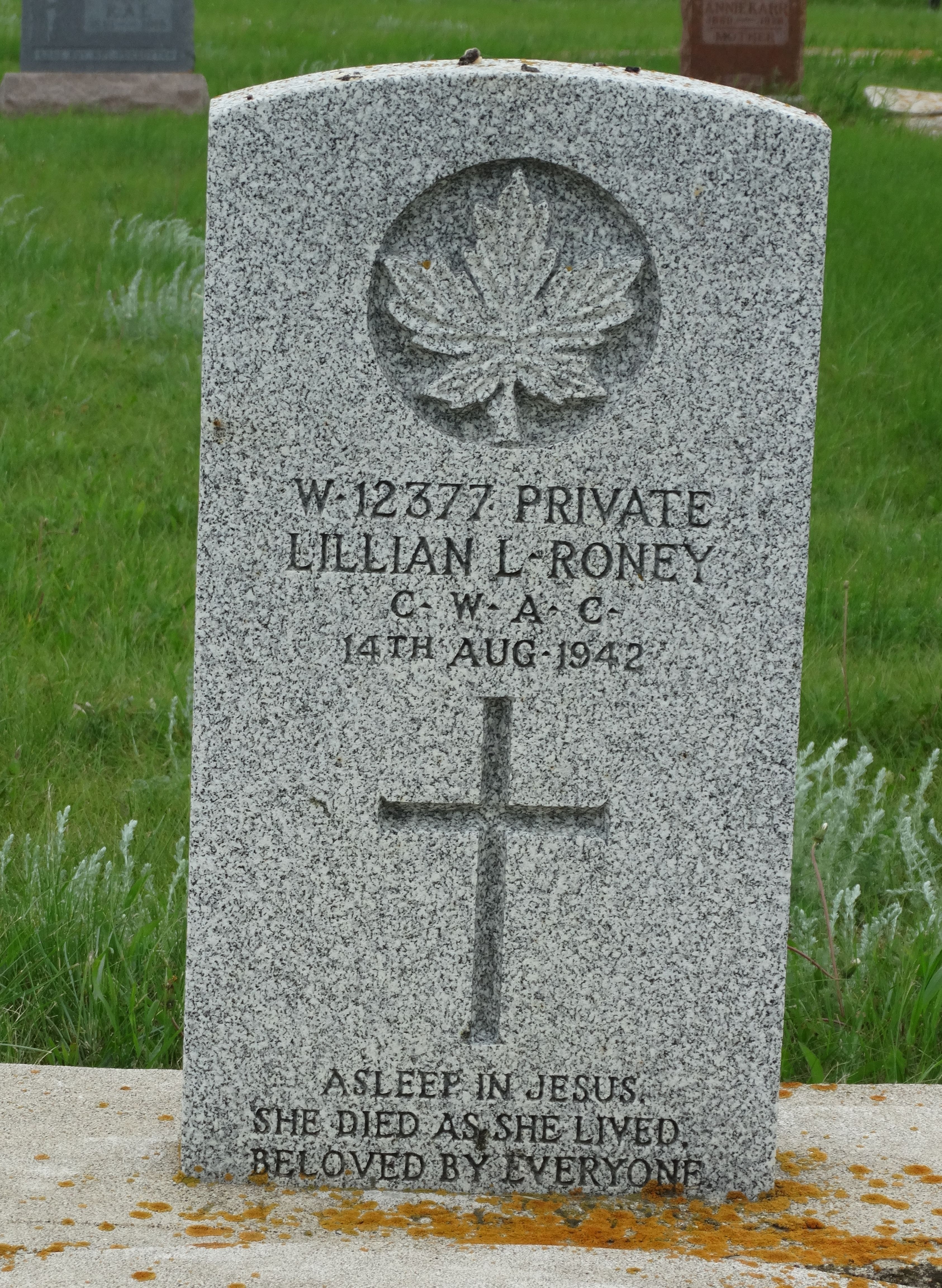
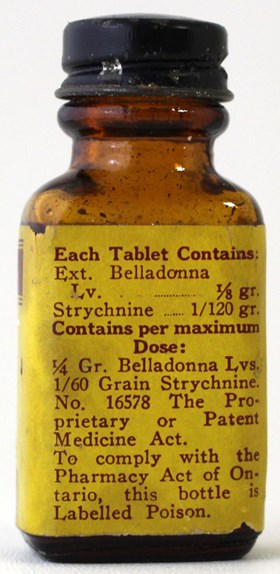
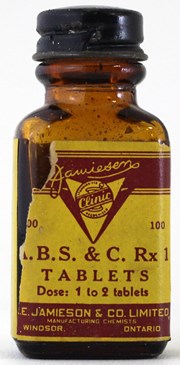
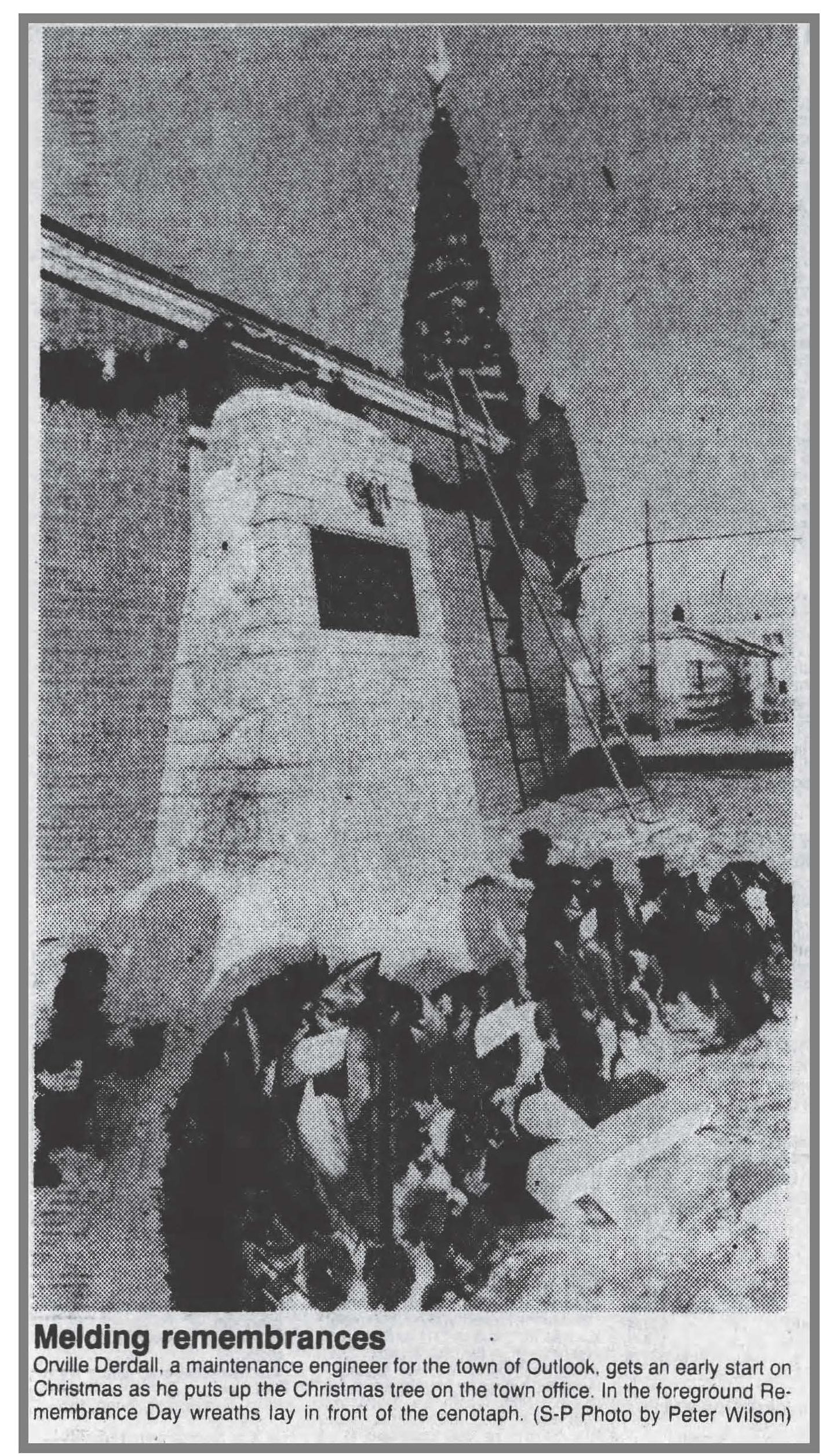

January 17, 1922 - August 14, 1942










Lillian Le Verne Roney was the daughter of Robert Ephram Roney and his wife Florence 'Effie' Roney, of Imperial, Saskatchewan. Her father was American and her mother, Canadian. Lillian had four brothers, Bert, who joined the Canadian Army, Robert, George and Dennis, and two sisters, Marion and Patricia. They ranged in age from 5 to 23. The family attended the United Church.
Lillian had a partial Grade 12 education and one year of business school at Balfour Tech. She was unemployed at enlistment in Regina, wanting to work as a typist/stenographer or do office work as a clerk.
She stood 5' 3" tall and weighed 118 pounds. She was considered fit for military service.
TRAINING:
On August 31, 1942, a Court of Inquiry was struck to investigate Private Lillian Roney's death by drowning on August 14, 1942. Her body was found ten miles further down the South Saskatchwan River, northwest of the town of Aberdeen on August 18, 1942.
Lillian was buried on August 22, 1942, at the Imperial Cemetery in Imperial, Saskatchewan.
"The Court reports that the death of Pte Lillian Laverne Roney, "O" Coy, CWAC, CA, was investigated by a coroner's Jury at Saskatoon, Saskatchewan and that on August 31, 1942, such Jury found the following verdict: That Lillian LaVerne Roney came to her death by asphyxiation from drowning in the South Saskatchewan River in the City of Saskatoon, at about 3:30 am on the 14th day of August, 1942. We found that death was suicidal whilst in a state of temporary melancholy."
Thirteen witnesses were called, including those associated with Lillian before her death. "These witnesses agree that she was a girl of high character and a cheerful disposition. She liked being in the CWAC and she was popular with everybody. She had no money troubles and was on good terms with her family. She was friendly with several young men and went out frequentl with one or other of them, She had a young man friend named Orville in Regina, who was in the Navy and had recently been sent to Eastern Canada. There was no formal engagement, but she once said she and Orville would be married if she were not in the Army."
"The following story emerges from the evidence: On the night before her death, namely the 13th of August, 1942, she went to a movie show with another girl, Pte Donnelly, and with two men, L/Cpl Whyte and Pte DeRosier. After the show, the party drove to the house where the two girls lived and all four sat on the porch there from about 11 pm until about 2:30 am when the two men took their departure. Roney and Donnelly took off their shoes and went up to their respective rooms. Donnelly went to bed and Roney went downstairs and out into the street. She was never seen alive again. Her body was found in the river on the evening of August 18th."
"The Court feels bound to state that it looked for a motive in the possibility of deceased having had sexual relations which might have subsequently induced a remorseful state of mind. It was unable to find evidence to support this. It is true that there was some 'fooling around' on one occasion on the porch, but all three persons who were there with Roney deny that any impropriety took place and apart from the denials, the Court thinks that with two couples present, it is unlikely that there was any impropriety, certainly not such as to anyone to commit suicide."
"The City Police of Saskatoon obtained from Eastern Canada a letter written by deceased to a sailor, Orville Derdall, which letter was entered as an exhibit at the Coroner's Inquest...this letter is consistent with an intention on the part of the deceased to commit suicide."
The letter, written on Canadian Legion letterhead, was included as evidence. "August 11, 1942, Dearest Orville, Please try not to be too ashamed of me -- but to be a weakling is too much for me to adjust. I can't explain it just as I would like to, I suppose others explain it as insanity -- OK -- but my love for you, dear, it too much to just sit and hope that there may be a chance some day that we may be together. You're so far away and the world seems so black. I get worse and worse every day. It's not fair to the CWAC and to those who believed me to be a more sound person and poor Dad -- he's given me all and more than a girl would want but what's all that when there is years and perhaps eternity between yourself and your loved one. I know I'll hurt some, but it will soon be forgotten. If what I do isn't considered too wicked, I'll see everyone where there is no heartache and sorrow. Darling, if you knew how I've missed you and all the time I never shed a tear. I tried to think of the better days to come. Now, I've given in, the poor fool, she was. May God bless you, Orville, and please don't think too bad of me. Remember me as I was when I was in my good moods -- if there were any. Lillian. A picture just to show I could smile."
Orville Willis Derdall of Outlook, Saskatchewan (1922-2013) married named Florence Mary Ingell (1918-1999), of Macrorie, Saskatchewan, on April 17, 1947. They had three children and seven grandchildren, with seven great-grandchildren. Orville was the maintenance engineer for the town of Outlook.
On June 7, 1943, a letter from the Village of Imperial, Saskatchewan wrote to the Department of National Defence about Lillian's headstone. "On September 23, 1942, I filled in a form in connection with a headstone for the above named deceased. We have heard nothing about the matter since that date and the parents of the deceased thought that the matter might have been possibly overlooked. Of course, we realise that you have a large number of similar cases to take care of and that this would be attended to in its turn. However, we would be pleased to get an assurance that the matter will be attended to in due course, as the parents are anxious to get the grave properly fixed up as soon as possible. An early reply will oblige."
In her personal belongings, Private Roney had a black wallet containing papers, one RCAF tin crest, one birthday book, a box containing stationary and photographs, a photo album, a pen, a note book, three personal letters, a bugle pin, a wrist watch, a signet ring, a $5.00 War Savings certificate and a Brownie camera. Clothing, toiletries, make-up, one denture, tooth powder, Listerine, perfume, and a bottle of A.B.S.&C. tablets. (A. B. S. & C. stands for Aloin, Belladonna, Strychnine and Cascara; despite poisonous ingredients and the designation of poison on the label, these pills were often used to treat habitual constipation.)
In December 1985, Lillian's brother, George, wrote to Veterans Affairs about his sister. "As far as I know, there has never been anything from honours towards, also I have been told there is a lake in the north that's named after her. Have not been able to find it on any map that I have. Our mother and father passed away some time ago and I was wondering if there might be some thing there. I would most like to know if there is." Roney Bay, Saskatchewan is named in Private Lillian Roney's honour, north of Buffalo Narrows, south of Turnor Lake in north western Saskatchwan.
In June 1986, George Roney received a reply from Veterans Affairs Canada. He was told that Lillian's service medals were issued to his father on August 8, 1951. If he wanted replacement medals, he would have to fill out a form, return the form and then would be issued a statement of the replacement cost.
LINKS: